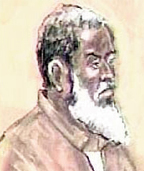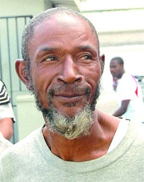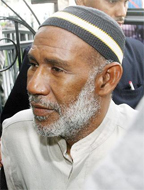The US Government said at least one of the four defendants, Russell Defreitas, had threatened to harm witness against him and this, coupled with substantial media attention has caused State Attorney Benton Campbell to apply to presiding Judge Dora Irizarry for an anonymous jury to ensure a fair trial. The prosecution hopes to have the jurors semi-sequestered — meaning they would take lunch together and would be kept together during recesses. Their names and addresses would not be revealed once the government gets its way.
Kadir along with Guyanese Abdel Nur, US citizen Defreitas, who is Guyanese by birth and the alleged mastermind, and Trinidadian Kareem Ibrahim have been slapped with conspiracy charges in an alleged plot to blow up the fuel tanks at the John F Kennedy (JFK) International Airport.
The four were arrested following information provided to the US authorities by a confidential source, who is a convicted drug trafficker and who is receiving financial assistance for information being provided. Authorities said the source has “provided extremely credible information that has been corroborated by consensual recordings, e-mails, financial documents, surveillance and other records and information.”

In his 24-page submission to Judge Irizarry, Campbell recalled that Defreitas, who once worked at the JFK airport that sees over 1,000 flights departing and arriving, and others began plotting to blow up the fuel tanks and connecting pipeline in early 2006. He reportedly said he was planning an attack for several years “from the time I worked in the airport before terrorism started in this country.”
Later Defreitas met the confidential source and the two travelled to Guyana that same year and met several other persons to discuss the plot; they discussed meeting Yasin Abu Bakr, “the leader of the Trinidadian militant group Jamaat Al Muslimeen which controlled the ‘underground’ in Trinidad.” When they did meet with Bakr at a later stage–with the help of Ibrahim–the Trinidadian had expressed an interest but they had no further meetings.
Benton spoke about how Defreitas went to lengths to get photographs and video footage of the tanks and how he and the source later met Nur in Guyana and they spoke about the type of explosives they could use to blow up the fuel tanks and pipelines.

Singling out Kadir, Campbell described the former PNC parliamentarian as someone who had “connections with militants in Iran and Venezuela” and who was shown the footage of the airport and expressed interest in furthering the plot but “needed a few weeks to contact some associates who would probably help them.
“Kadir informed Defreitas and the source that his associates had their own rules of engagement and wanted to reduce the killing of innocents, such as women and children,” Campbell wrote adding that Kadir suggested that the explosions take place in the morning hours so that the damage would primarily be economic in nature. He also instructed that the information be placed on a thumb drive and that the plot should be code-named ‘the chicken hatchery” or “chicken farm” for future communications.
He also advised that video was not sufficiently detailed for operational purposes that Google Earth software should be used to get more detailed pictures of the airport. Weeks later this was done and Campbell revealed that Kadir, who is an engineer by education and training, asked many questions about the maps, including the distance between the street and the fuel tanks. He was asked by Defreitas about the composition of the tanks and he explained “in sum and substance, that they were probably double tanks, [that is] a tank within a tank.

“Kadir said that two explosions would be necessary to ignite the fuel inside the inner tank, and explained that fuel needs oxygen to explode,” Campbell wrote.
According to Campbell, at one time during discussions in Trinidad Ibrahim had said he would send one of his “trusted associates to present the plot” to his contacts in Iran and/or the United Kingdom who were connected with the “revolutionary movement” in Iran. Defreitas at that point had said if any money were collected from individuals in Iran or elsewhere to help fund the plot it should be kept in an account controlled by Kadir who later agreed for monies to be placed in his mosque account.
Shortly after these meetings, while the defendants were still allegedly attempting to get money to fund the plot, they were arrested. Kadir was arrested in Trinidad on his way to Venezuela from where he intended to travel to Iran while De Freitas was arrested in New York and Ibrahim and Nur in Trinidad.
Plotting
According to Campbell, since his arrest in June 2007, at least two inmates previously housed in the same jail with Defreitas reported that he had plotted to cause harm to an anticipated government witness and officers of the court. One of the inmates was a source of the authorities and he reported that Defreitas was “plotting to have a government witness killed and was also attempting to contact co-conspirators still at large in Guyana to warn them about the possibility of arrest and extradition.”
The defendants’ association with the Trinidadian militant group JAM also raised concerns about juror safety and the integrity of the judicial process. “JAM has a long history of violence,” Campbell wrote.
He went on to detail the activities of the organisation and its leader Abu Bakr, who is said to have links with Libyan leader Mohamar Qadafi and other Islamic militant organisations. Campbell said the organisation is “notorious for witness tampering and otherwise obstructing the judicial process.”




